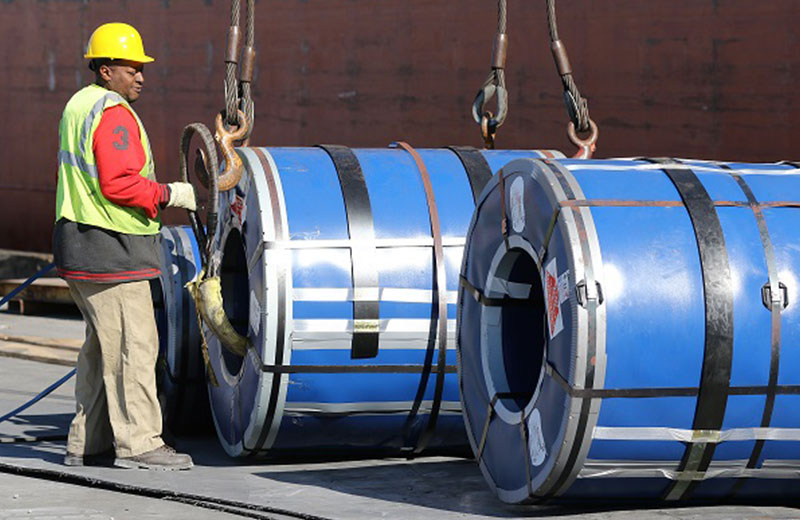August 3, 2020: Following a surge in steel exports over April-June, India’s Jindal Steel and Power Ltd. (JSPL) remains committed to supplying its domestic market given its long-term growth potential, Vidya Ratan Sharma, the steelmaker’s managing director, told S&P Global Platts in an exclusive chat this week.
JSPL is one of India’s major steel companies with an overall domestic steel production capacity of 8.6 million mt/year, and among the few private mills in India that did not cut production drastically at the time of the imposition of a country-wide lockdown on March 24.
India was a net exporter of finished steel products in the first quarter of fiscal 2020-21 (April-March), selling 3.27 million mt, up 145.3% year on year.
Export strategy
JSPL’s total exports stood at 900,000 mt in the second quarter of 2020, spanning markets like Europe, China and Southeast Asia. The company’s data showed total exports to the tune of 248,000 mt in April, 401,000 mt in May and 250,000 mt in June.
“We were not a very big player in exports, but … we discussed with a couple of our trading partners, and we got a good breakthrough from Europe,” he said.
Sharma spoke of the “serious problem of steel shortages” in Europe at the start of the regional lockdowns to fight the coronavirus providing an opportunity for JSPL to export a variety of steel products to the region, including plates, beams, wire rods and specialty coils.
The mill thereafter got “another breakthrough” from Saudi Arabia and the UAE given the inactivity of Chinese and South Korean suppliers during the lockdown, and so JSPL “started supplying to them.”
Sharma mentioned that this was followed by enquiries for semis from Southeast Asia as Russians, Ukrainians and the Iranian suppliers were hindered by the congestion in the Suez canal, among other things.
Additionally, the availability of small-sized vessels of 30,000 mt, especially to Vietnam, which were already idle, made freight charges competitive for export from India.
Exports to China
“Chinese construction industry was booming, so they were also looking at the right partner, and we were also looking at the right buyer. So it was an understanding as per the convenience of both buyer and seller,” he said on JSPL’s exports to China.
“The landed cost to the Chinese customer was equivalent to whatever the landed cost they were getting from Russia and Ukraine, and that has helped us,” he said, adding freight from India to China at the time stood at $12/mt with voyage time as 7-8 days.
Apart from China, JSPL found export opportunities in Australia, Indonesia, the Philippines and Vietnam, which were capitalized, he said. The mill is likely to continue with exports to China amid a lack of “any instruction or indication” from the government of India against it, even though Indian exports cannot substitute Chinese exports, he added.
“We cannot replace China in the international market because of the volumes,” he said.
China’s crude steel production in 2019 reached 996.3 million mt while India stood at about 111.2 million mt, data from the Worldsteel Association showed.
Domestic recovery
In the third quarter, JSPL expects its steel exports to reach 600,000 mt, Sharma told Platts, “selling at least 200,000 mt a month,” which includes about 50,000 mt of plate to Europe and 20,000-25,000 mt of plate to Saudi Arabia. Plate will also be sold to South Africa and the UAE, along with billets to China, Indonesia, the Philippines and Vietnam.
“Rebars in India are more lucrative than exporting rebar because the demand has picked up. The projects have started.”
JSPL is reducing the volume of exports because the domestic market has picked up, Sharma said, amid the reopening of steel markets across the country leading to “a big jump in Indian demand.”
Long-term potential for India’s growth
Sharma stressed on India’s long-term growth potential, given the low per capita steel consumption, and on the need for further capacity additions within the country.
“Our own demand is going to be phenomenal,” he said. If the new Indian mills do not come online, “by 2023, India will be importing at least 20 million-25 million mt a year,” he added.
“We need to have at least 50 or 60 million mt of new capacities to come in the next four to five years’ time to maintain the balance,” he said.
Under the Indian government’s National Steel Policy unveiled in 2017, a target of 300 million mt/year of steel production capacity has been set.
Source: Platts






